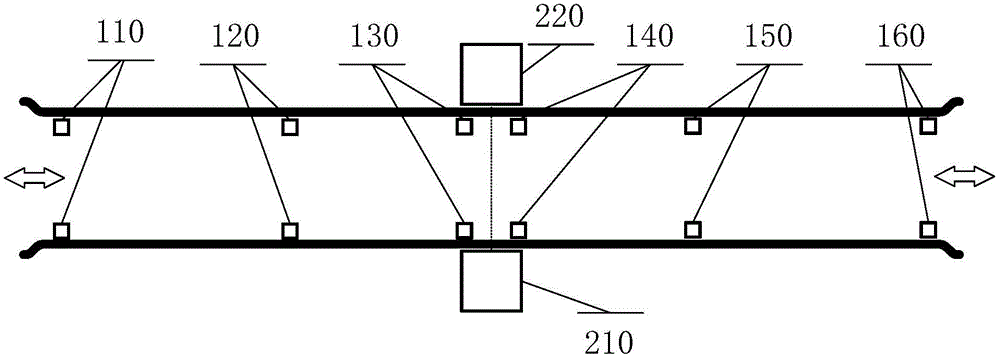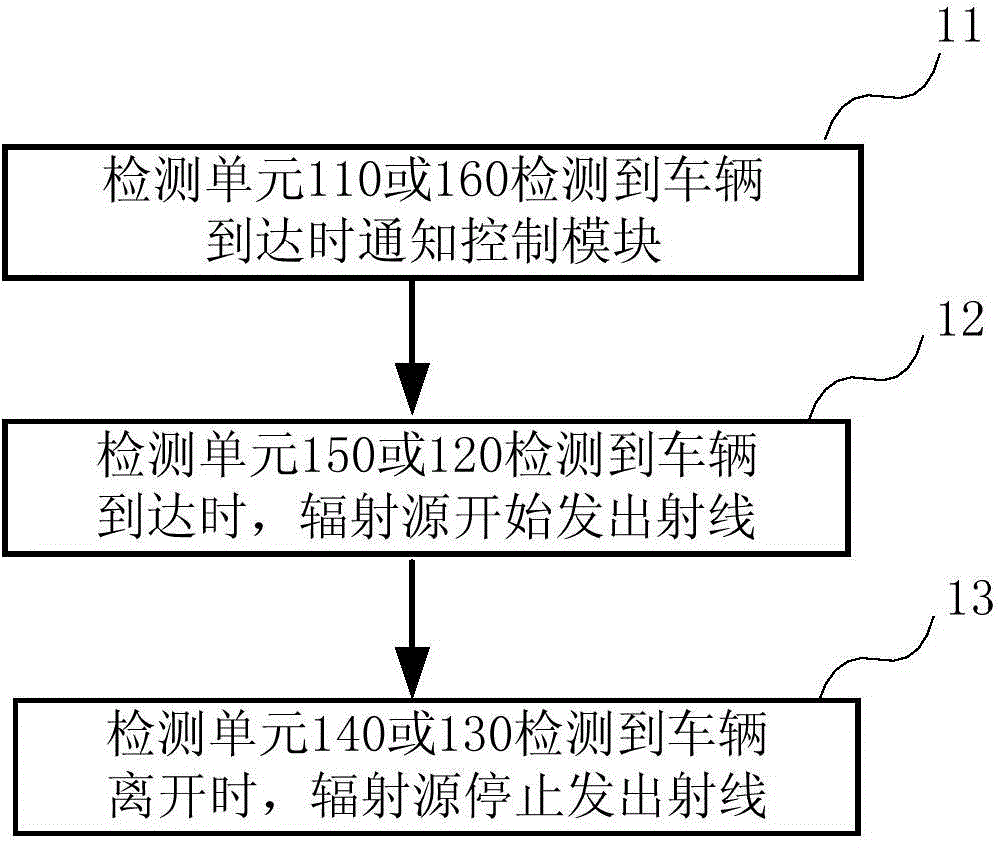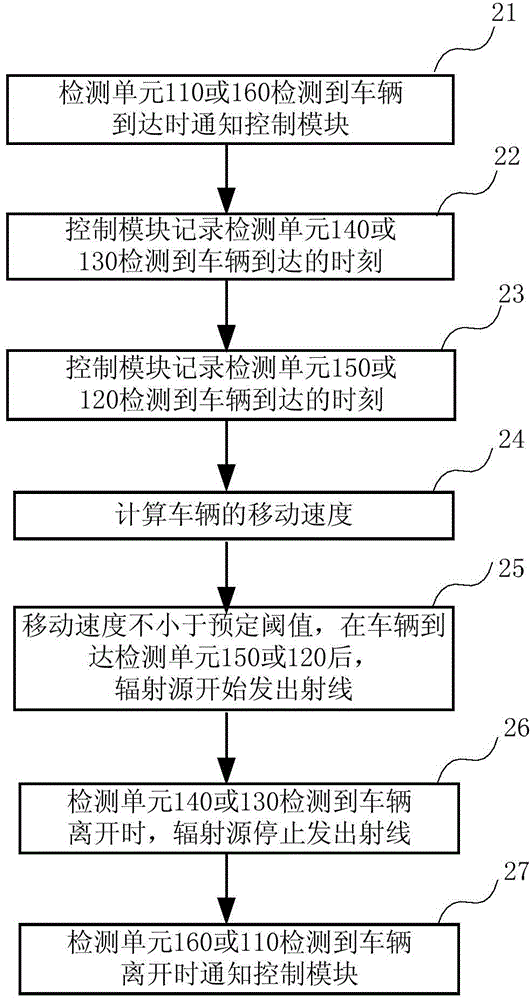System and method for carrying out radiation survey on moving target
A moving target and radiation source technology, applied in the field of radiation inspection of moving targets, can solve problems such as low inspection efficiency, increased equipment and labor input costs, and inability to carry out inspections on moving targets, so as to achieve high security inspection efficiency and ensure personnel safety. Effect
- Summary
- Abstract
- Description
- Claims
- Application Information
AI Technical Summary
Problems solved by technology
Method used
Image
Examples
Embodiment Construction
[0033] The technical solutions of the present invention will be described in detail below in conjunction with the accompanying drawings and specific embodiments.
[0034] figure 1 It shows a schematic structural diagram of a radiation inspection system according to an embodiment of the present invention, wherein the radiation source 210 and the array radiation detector 220 are respectively located on both sides of the detection channel. When a moving object such as a vehicle passes by, the radiation source 210 emits scanning rays to detect The device 220 receives the radiation that penetrates the moving target, converts it into corresponding digital quantities, and forms a digital radiation image after being processed by the imaging system (not shown in the figure), completing the radiation scanning security inspection process. During the scanning process, the radiation source rays are collimated by the collimator and are limited in the scanning area, and the objects beyond th...
PUM
 Login to View More
Login to View More Abstract
Description
Claims
Application Information
 Login to View More
Login to View More - R&D
- Intellectual Property
- Life Sciences
- Materials
- Tech Scout
- Unparalleled Data Quality
- Higher Quality Content
- 60% Fewer Hallucinations
Browse by: Latest US Patents, China's latest patents, Technical Efficacy Thesaurus, Application Domain, Technology Topic, Popular Technical Reports.
© 2025 PatSnap. All rights reserved.Legal|Privacy policy|Modern Slavery Act Transparency Statement|Sitemap|About US| Contact US: help@patsnap.com



